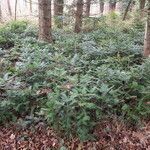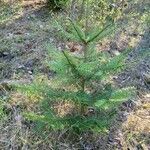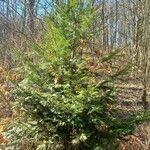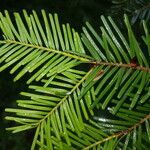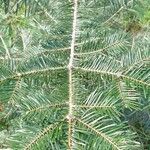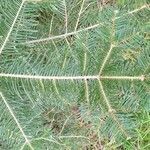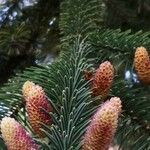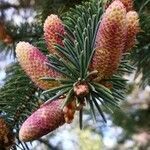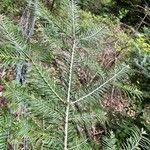A large fir tree. It grows 40-90 m high. The trunk can be 90 cm across. The leaves when crushed smell like orange peel. The leaves are relatively stiff and 20-35 mm long. They are shorter on the upper side of the twig. The upper surface is shiny dark green and grooved. There are several lines of white dots underneath. The leaves spread horizontally in two layers. The cones are small and ripen to dark brown. They have a blunt or sunken tip. They are 5-12 cm long. The scales are wider than long. The seeds are light tan and 6-10 mm long.
